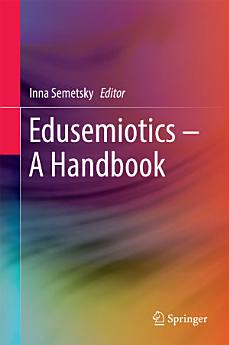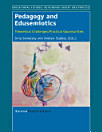Edusemiotics – A Handbook
អំពីសៀវភៅអេឡិចត្រូនិកនេះ
The book’s emphasis is on educational theory as based on semiotic philosophy: as such, it challenges the current conception of semiotics in education as merely a sub-branch of applied semiotics. It presents edusemiotics as a novel unified conceptual framework at the interface of theoretical semiotics and educational philosophy, based on both theoretical and empirical studies from around the world.
The chapters in this handbook also bring to the fore the intellectual legacy of Charles S. Peirce, John Dewey, Gilles Deleuze, Umberto Eco, Julia Kristeva, Mikhail Bakhtin, Paul Ricoeur, Martin Heidegger and other thinkers, pointing out the implications of edusemiotics for meaningful pedagogy and experiential learning in diverse contexts.
អំពីអ្នកនិពន្ធ
Inna Semetsky has a PhD in the philosophy of education from Columbia University in New York in addition to her earlier MA in counseling and Grad.Dip.Ed. in mathematics and science education. She was a Postdoctoral Research Fellow at Monash University, Australia and has received the First Roberta Kevelson Memorial Award from the Semiotic Society of America (SSA) for her innovative research. She serves on the editorial boards of several academic journals including Educational Philosophy and Theory. She has produced over 150 academic publications including nine books. Among her titles are Deleuze, Education and Becoming (2006); Re-Symbolization of the Self (2011); Jung and Educational Theory (2013); and The Edusemiotics of Images (2013). Her latest book Edusemiotics: semiotic philosophy as educational foundation (coauthored with Andrew Stables) received a 2015 Book Award from the Philosophy of Education Society of Australasia (PESA). She has guest-edited several special issues of such journals as Educational Philosophy and Theory, Studies in Philosophy and Education, Policy Futures in Education, and Semiotica – a journal of the International Association for Semiotic Studies (IASS). She now serves as a chief consultant to the recently established Institute for Edusemiotic Studies (IES) registered in Melbourne, Australia.





